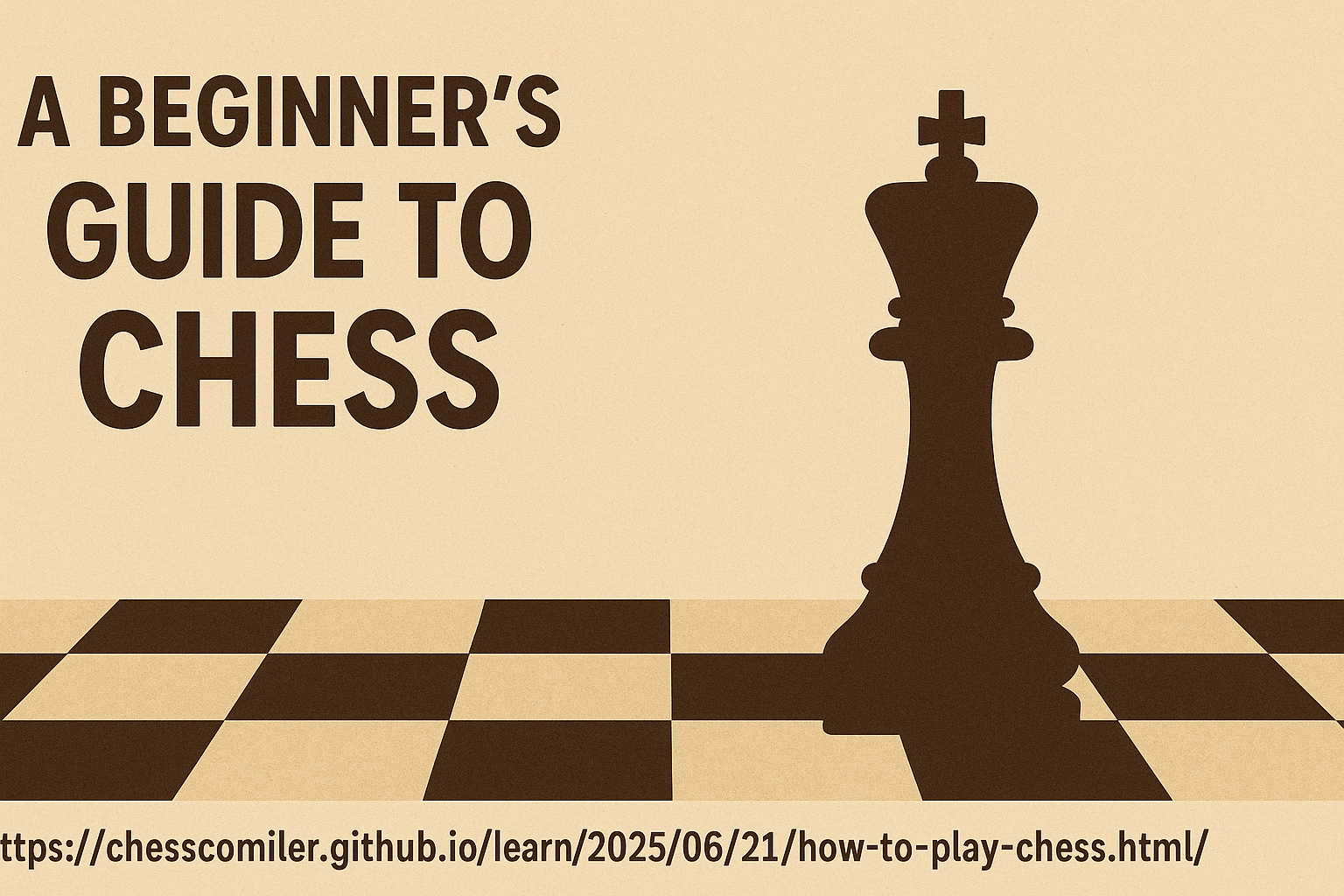🧠 How to Play Chess: The Ultimate Beginner’s Guide ♟️

Chess is more than just a game — it’s a battlefield of brains, a masterclass in strategy, and a way to sharpen your mind while having fun. Whether you’re brand new or just brushing up, this guide will walk you through everything from setup to special rules, helping you build a strong foundation for your chess journey.
💡 Pro Tip: Practicing chess puzzles regularly accelerates your improvement — try solving a few every day!
🏁 Setting Up the Chess Board
Before the first move, let’s get your board right. Here’s how:
- Place the board so that a light square is on your bottom-right corner — easy tip: “White on right.”
- Each player starts with 16 pieces:
- 8 Pawns
- 2 Rooks
- 2 Knights
- 2 Bishops
- 1 Queen
- 1 King
Correct Setup:
- Pawns go on the second row (or rank) from each player.
- Rooks in the corners.
- Knights next to rooks.
- Bishops next to knights.
- The Queen goes on her own color (white queen on white square).
- King takes the last remaining square in the row.
White moves first, always.
🔍 Test yourself: Can you spot any misplaced pieces if the board isn’t set up correctly? Trying to set up the board from memory is a great way to reinforce your knowledge.
📦 How the Pieces Move
Understanding each piece is key to unlocking chess strategy. Each has its own style, power, and purpose. Let’s explore them!
👑 King
- The King is your most important piece.
- Moves one square in any direction — horizontal, vertical, or diagonal.
- You must keep your king safe at all costs — if he’s threatened and can’t escape, it’s checkmate.
🛡️ Tip: Castling helps safeguard your king — more on that later!
👸 Queen
- The Queen is the most powerful piece.
- She can move any number of squares vertically, horizontally, or diagonally.
- Use her for aggressive attacks, tactical threats, or long-range support.
👑 Promotion: When a pawn reaches the other side of the board, it often becomes a queen.
🏰 Rook
- The Rook moves in straight lines — either across ranks or files.
- It’s excellent for endgame power plays and controlling open lines.
- A rook pairs wonderfully with the king for the special move called castling.
🔧 Rooks are often quiet early in the game but become stars in the endgame.
⛪ Bishop
- Bishops move diagonally and have long reach.
- They stay on the color they started on for the entire game.
- A pair of bishops can control wide zones of the board when working together.
⚔️ Keep your bishops active — they’re deadly in open positions!
🐴 Knight
- The Knight moves in an “L” shape: two squares in one direction, then one square perpendicular.
- It’s the only piece that can jump over others.
- Great for forking (attacking two pieces at once) and controlling central squares.
🔄 Knights are tricksters — place them near the center for maximum impact!
⚔️ Pawn
- Pawns move forward one square, or two squares from their starting position.
- They capture diagonally and can never move backward.
- Upon reaching the last rank, a pawn can promote to any piece (except the king).
🪙 Don’t underestimate pawns — they may start small but can end up queens!
📜 Essential Rules of Chess
Beyond movement, chess has unique rules that make it exciting and strategic.
- Check: The king is under attack. You must respond.
- Checkmate: The king is trapped. Game over.
- Stalemate: The player has no legal moves, but the king isn’t in check. It’s a draw.
- Castling: A move that slides the king two squares toward a rook, and the rook jumps over.
- En Passant: A special pawn capture that can happen immediately after an opponent moves their pawn two squares forward.
- Pawn Promotion: A pawn reaching the far end of the board becomes another piece (usually a queen).
🎯 Try setting up these special positions and practicing the rules with a friend or against a chess app to really solidify your understanding.
🌱 Tips for Beginners
Want to improve rapidly? Follow these key principles:
- Control the center with pawns and pieces.
- Develop knights and bishops early — don’t leave them stuck!
- Castle early to protect your king.
- Don’t move the same piece twice in the opening unless necessary.
- Think before every move — always ask: “What’s my opponent planning?”
- Look for checks, captures, and threats on every turn.
- Review your games to spot mistakes and learn from them.
🧠 Learning chess is like building a mental gym — each puzzle you solve flexes your brain. Even short practice sessions can make a difference!
🚀 Online tools and interactive puzzle trainers can help you practice tactics and track your progress. Find one that suits your style and use it consistently.
🧩 Sharpen Your Skills with Practice
If you’re serious about getting better at chess, make regular practice a habit:
✅ Interactive puzzles tailored to your level
✅ Instant feedback and move explanations
✅ Clear progress tracking and performance stats
✅ Tactics, openings, and endgame training
Many modern chess apps and websites offer these features. Make use of them to build confidence and skill, one move at a time!
🏁 Ready to Make Your First Move?
Congratulations — you now know the fundamentals of how to play chess, how each piece moves, and what rules shape the game. But remember, understanding the game is just the start — mastery comes from practice.
🎯 Set up a board, play through some puzzles, or challenge yourself against a friend or computer. The journey to becoming a chess tactician starts with your very next move.
Your board is set. Your mind is sharp. Let the game begin!